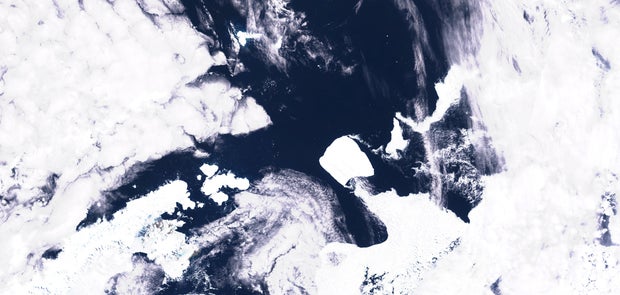The world’s biggest iceberg — which is roughly three times the size of New York City — is “on the move” after being stuck to the ocean floor for 37 years, scientists confirmed Friday.
Recent satellite images show the iceberg, called A23a, is now moving past the northern tip of the Antarctic Peninsula and headed toward the Southern Ocean, according to the British Antarctic Survey.
The iceberg, which spans almost 4,000 square kilometers (or 1,500 square miles) in area, split from the Antarctic coastline in 1986, but then became grounded in the Weddell Sea, the BBC reported.
The British Antarctic Survey on Friday posted a time-lapse of satellite imagery, showing the iceberg’s movement.
“Here’s its journey out of the Weddell Sea after being grounded on the sea floor after calving in August 1986,” the survey wrote.
Before its calving in 1986, the colossal iceberg hosted a Soviet research station. It’s unclear why the iceberg is suddenly on the move again after 37 years.
“I asked a couple of colleagues about this, wondering if there was any possible change in shelf water temperatures that might have provoked it, but the consensus is the time had just come,” Dr. Andrew Fleming, a remote sensing expert from the British Antarctic Survey, told the BBC. “It was grounded since 1986 but eventually it was going to decrease (in size) sufficiently to lose grip and start moving.”
A23a will likely be ejected into what’s called the Antarctic Circumpolar Current, which will put it on a path that has become known as “iceberg alley,” the BBC reports. That is the same current of water that famed explorer Ernest Shackleton used in 1916 to make his storied escape from Antarctica after losing his ship, the Endurance. The legendary shipwreck was discovered off the coast of Antarctica just last year.
Courtesy of European Union/Copernicus Sentinel-3/Handout via REUTERS
A23a’s movement comes about 10 months after a massive piece of Antarctica’s Brunt Ice Shelf — a chunk about the size of two New York Cities — broke free. The Brunt Ice Shelf lies across the Weddell Sea from the site of the Larsen C ice shelf on the Antarctic Peninsula. Last year, the Larsen C ice shelf — which was roughly the size of New York City and was long considered to be stable — collapsed into the sea.


